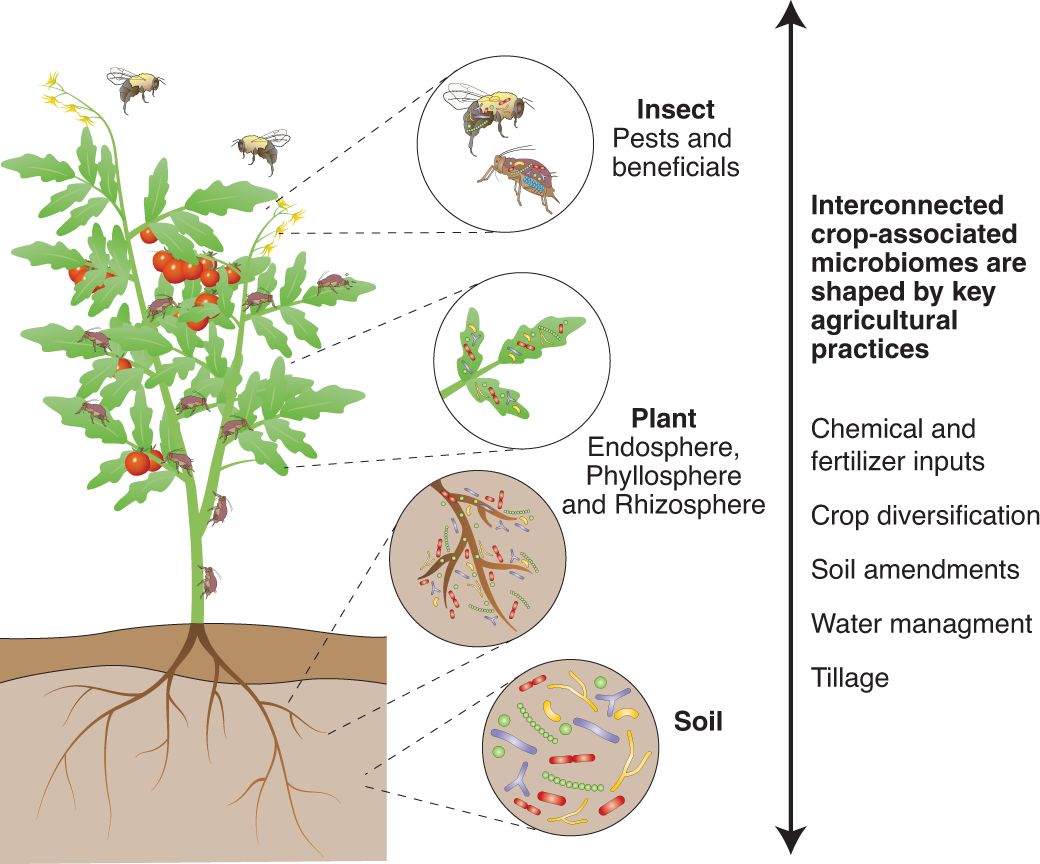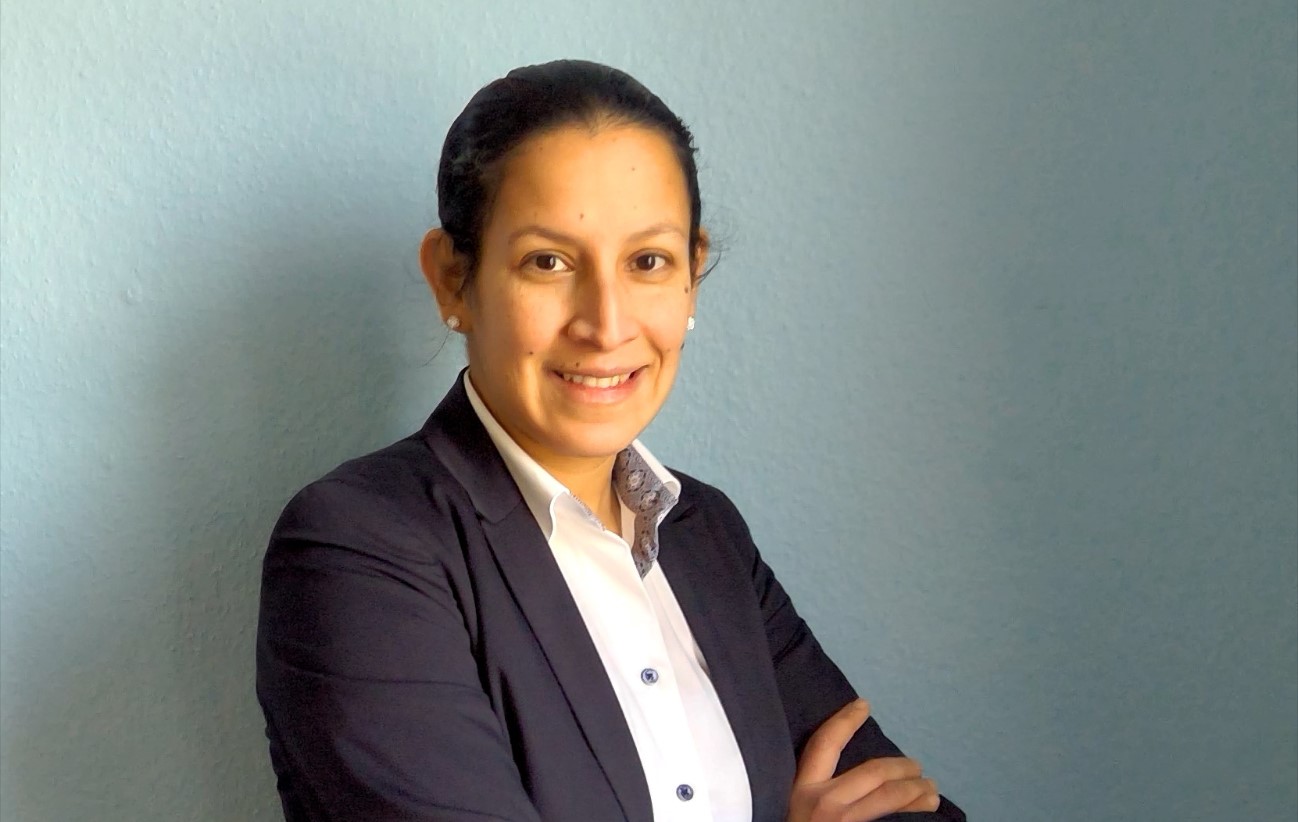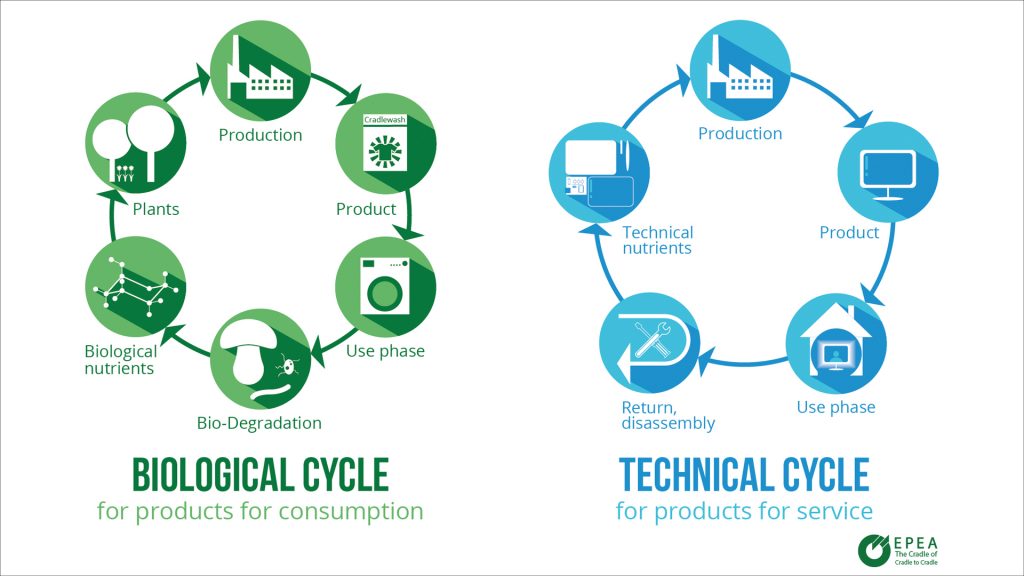In their natural environment, plants are part of a rich ecosystem, including the most diverse and complex group of microorganisms in the soil. It has been estimated that a typical gram of soil contains around 90–100 million bacteria and about 200 000 fungi, in addition to other organisms such as archaea, viruses and protozoa, with many of these organisms being located around the roots of the plants. The interactions between plants and soil microbes may be beneficial, harmful or neutral for the plants. However, beneficial soil microbes perform fundamental functions such as nitrogen-fixation, phosphorus solubilization, suppression of pests and pathogens, improvement of plant stress, and decomposition that leads to soil aggregation.
These interactions between the plants and the soil microbiome, as well as plant growth and health, can be influenced by the agricultural practices and the environmental conditions they are exposed to. To enhance those interactions, the factors that influence the microbiota community composition to stimulate its beneficial members should be taken into consideration. Some examples of these influential factors are the use of bioinoculants, proper agricultural practices, and certain environmental conditions. On the other hand, micro-organisms with critical roles in the microbiome can be isolated, formulated, and become a new biological product. Regardless of the approach to be used, innovations with the use of microbiomes represent the future of sustainable agriculture.

Agricultural practices – soil microbiome interaction (Source : Nature Plants)
Over the past decade, there has been increasing momentum within the agriculture industry to help producers to move towards a regenerative agriculture system, including improved soil health, while ensuring profitable and resilient working lands. Studies have shown us that large scale adoption of proven conservation practices can rebuild our agricultural soils, improve water quality, enhance biodiversity, and reduce carbon emissions. These practices include maintaining living roots in soils (cover crops), minimizing tillage or disturbance (conservation tillage or no-till), increasing crop diversity (new crops or rotations), and applying nutrients more efficiently.
Significant progress from the start-up entrepreneurial community has been made in the development of innovative solutions that will scale the adoption of critical soil health and regenerative practices. Some of them are focused on providing access to platforms that transform data into knowledge to monitor, conserve and improve soil health, while others are developing specific products such as bio-stimulants to increase the crop’s performance and quality, as well as the tolerance to plant´s diseases in adverse weather conditions and in abiotic stress effects.
Soil microbiome Webinar
During the webinar on “Soil microbiome: what's behind the buzz?”, organized on 02 February 2022 by RootCamp (moderated by Dr. Philipp Rittershaus) and hosted on DLG e.V. - German Agricultural Society platform, examples of these solution were presented, as follow:
Biome Makers Inc (United States) offers the most advanced technology for functional soil analysis, combining DNA sequencing, agricultural data, and intelligent computing to decode soil microbiome functions. With this application different indexes on biodiversity, nutrient, stress, and biocontrol impact are calculating to better-informed decision making. It counts with the bigger microbiome database worldwide, as a result of more than 27,000 soil samples collected in different regions around the world. Its solutions are focused on determining the soil health, and to track the performance of fertilizers, stimulants, crop protection products or the efficacy of specific management practices.
Sequentia Biotech (Spain) offers bioinformatics, cloud, and custom software, as well as consulting services in many sectors, including agriculture, to allow user to analyse microbiome data (e.g., by using sequencing markers, sequencing the entire genome or the entire transcriptomics of the samples). By using one of its online platforms, GAIA, users can upload the sequencing data of any sample, to identify and quantify the taxonomic and functional profile of the given sample. GAIA results can inform the users about the species present in the samples, the gene functions, and the species responsible for a specific function in the analysed samples.
GAIAGO (France), on the other hand, is an agricultural start-up that specializes in natural and innovative fertilizers: biological fertilizers, microbial inoculants, and biostimulants. At the heart of its mission is the preservation of life and biodiversity in agricultural production by revitalising agricultural land locally. The solutions developed by GAIAGO give farmers the possibility of thinking about fertilization and crop health in a natural way while improving yields.
Biolevel (England) specializes in bio-fertilization. It offers a wide range of microbial products to improve the health of soil while stimulating plant growth generating higher yields and better return on investment. Their can be used alone, as a seed treatment or co-applied with other inputs.
Aphea.Bio (Belgium) is a leading Research and Development company focuses on the development of new and superior agricultural biologicals (microbials). Its work concentrates on products that help reduce fertilizer application (biostimulants) and control fungal diseases (biocontrol agents) sustainably in maize and wheat.
During the webinar, the speakers Joska Gerendas (Chief Agronomist at K+S Group) Alberto Acedo Bécares (Co-founder and CSO at Biome Makers Inc.), Lutz Glandorf (Co-founder at Biolevel - Soil microbial products), Andreu Paytuví (Bioinformatics at Sequentia Biotech), Tom Viaene (project Lead at Aphea.Bio), and Francis B. (Head of Agronomic Research at GAIAGO) not only discussed about the importance of generating information for the better understanding of the microorganisms living in soil and their interactions, but they also highlighted that providing farmers with specific information on selected novel products based on their local conditions is key for the adoption of such technologies.
The availability of models or information systems, that could capture all the complex interactions happening at soil level and the surrounding environment, to predict the potential effect of microbiome related products is also crucial to demonstrate to farmers the positive effects that these technologies can have in terms of improved soil health and crop productivity.
Looking forward, the use of microorganisms as bio-stimulants, biofertilizers, or biocontrol agents by farmers has gaining substantially interest owing to their potential to improve crops performance, farm´s economic benefits, and the environmental safety associated with their use. Collaborative research on the use of these technologies involving different stakeholders, including farmers, is highly encouraged to improve the effectiveness, stability, and reliability of these products under different environmentally stressing conditions, and consequently to boost their adoption.
Feel free to share your thoughts and comments here or follow us on LinkedIn!
/rootcamp_logo_white_2022.png?width=2123&height=630&name=rootcamp_logo_white_2022.png)

/RC%20logo%202022.png?width=2325&height=703&name=RC%20logo%202022.png)






